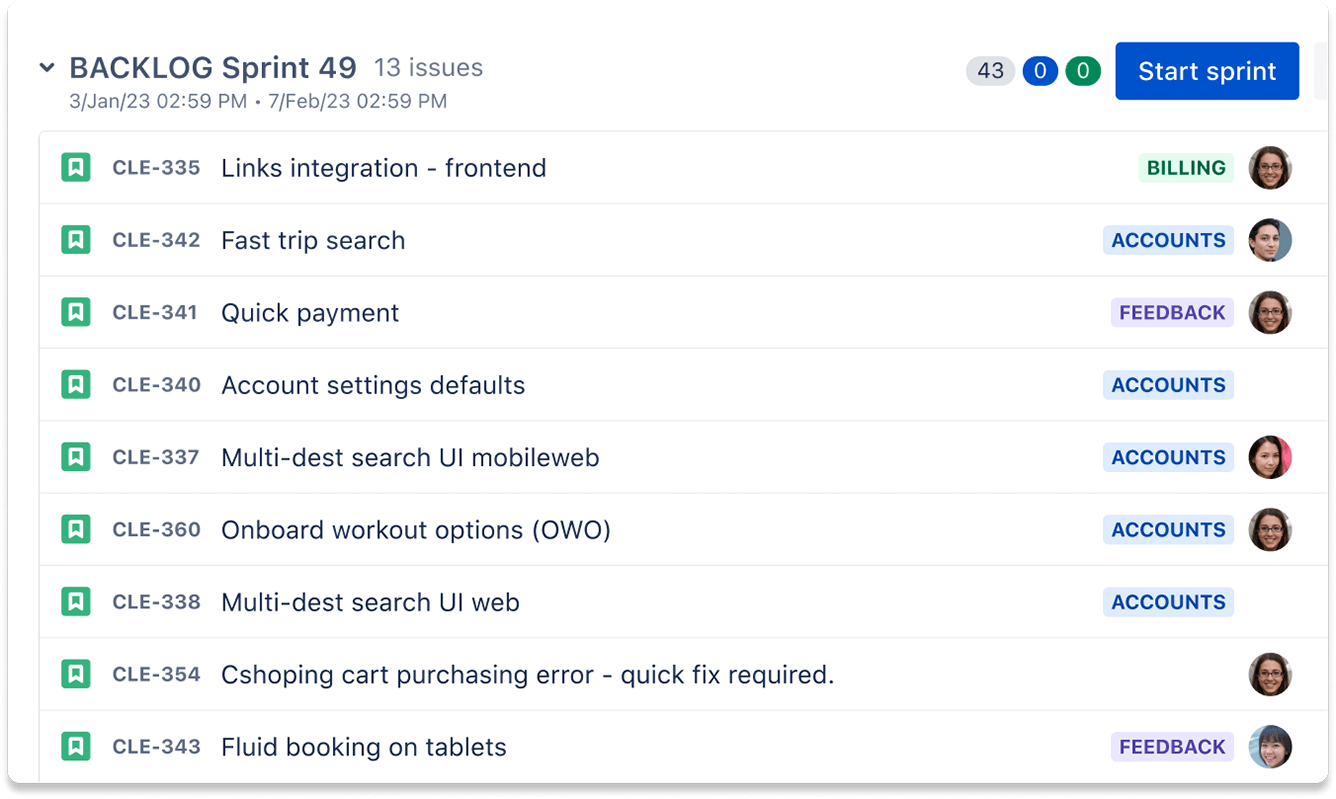Product development template
A product development template ensures consistency from project to project as you develop new products and features. At the same time, it provides a replicable process that you can use company-wide, streamlining workflows.
What is a product development template?
Product development involves many tasks that require coordination with various teams and stakeholders. The process can be daunting and complex, but it doesn’t need to be. Product development plan templates can make the job of a product manager much easier.
Product development templates simplify and standardize the product development process with easy-to-follow steps. They help teams follow every step precisely and ensure consistency between cross-functional teams. Everyone will have the same expectations regarding how the team will execute the product roadmap.
Benefits of using a product development template
Product development templates minimize product management errors, ensuring deliverables consistently align with stakeholder and customer expectations.
By utilizing these templates, teams can effectively plan and oversee the entire development process, closely monitoring iterations and deliverables. As a result, companies can expedite product launches, enhancing their speed and effectiveness in the market.
Streamline workflows
Templates streamline the end-to-end process, including phases, tasks, timelines, and responsibilities. They provide a replicable workflow blueprint that you can modify, saving you time upfront.
Align cross-functional teams
Templates standardize processes, minimizing confusion among cross-functional teams. This uniform approach ensures that all team members and stakeholders share a clear understanding of their responsibilities and tasks, guaranteeing the successful completion of all essential work.
Improve visibility
Templates are easily customizable so you can provide information most relevant to your team and stakeholders. With tailored views, stakeholders can see real-time data and track project progress.
Enhance strategic planning
Templates eliminate the need for busy work, freeing up more time for teams to focus on strategy. This, in turn, enables them to execute their goals with greater precision and efficiency.
Featured products:
Jira
Jira offers an alternative to product development templates with agile project planning. It helps teams break down projects into manageable tasks to keep teams focused and motivated, prevent blockers, and get a visual display of the work process during a single, defined sprint. This eases the daunting task of kicking off a large, ambitious project, and helps keep everyone aligned throughout the process.
Jira Product Discovery
Like product development templates, Jira Product Discovery is a roadmapping and prioritization tool that empowers teams to capture and prioritize ideas effectively, enabling them to build the most impactful features.
Related templates
Project kickoff
A well-executed kickoff sets a project on the path to success from the very beginning. Use the Confluence project kickoff template to outline a project’s vision, mission, and strategy.
Product roadmap
Capturing ideas is just the first step. Executing them effectively is just as important. To prevent valuable ideas from getting lost, use the product roadmap template to record and organize them.
Product requirements
Don’t let the excitement for new ideas overshadow your strategic thinking. Use Confluence’s product requirements template to keep everyone aligned on the product’s goals and objectives.
